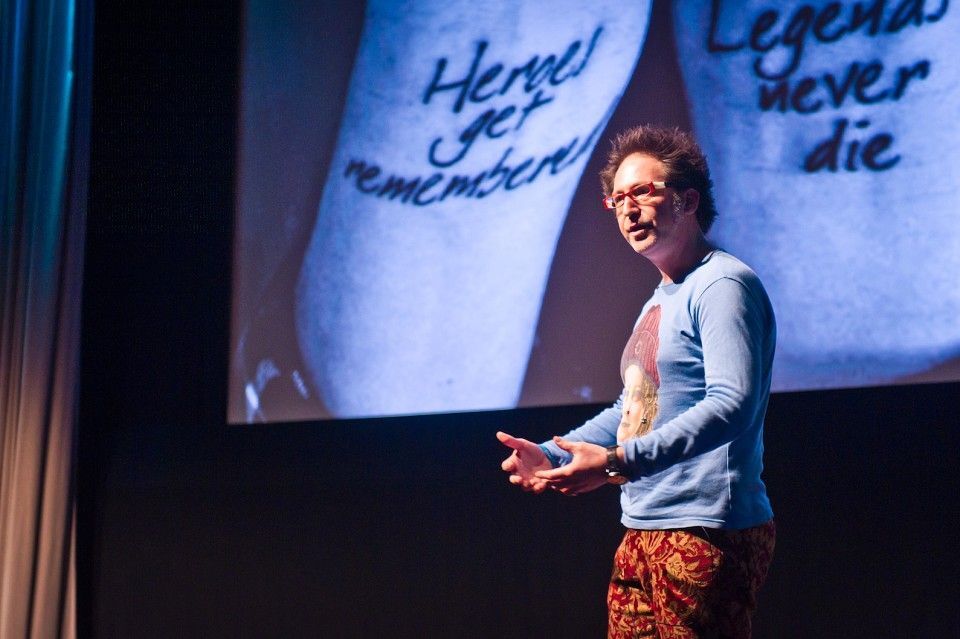
How do you change the world?, by @grudevaa
By Annie Grudeva
Recently I had the chance to meet one of my heroes – Robert Cialdini at a talk about his new book The Small Big with Steve Martin and Noah Goldstein. Now, I don’t know if any of you had this problem but I find it really difficult to write about things like this – at the back of my head there is pressure, the fear of ‘what if he comes across this, what if he reads it and I didn’t get it right’. Alas I have to write it so here goes nothing.
How do you make people do things?
This is the problem every brief we get is trying to solve – sell more shavers, download an app, switch to a more expensive toilet paper that does the same thing as the cheaper one. Cialdini suggested we start small, baby steps. You see, the problem is everyone has an agenda and everyone knows that (especially those evil advertisers trying to make me sell my soul!). As humans, no, as animals it’s coded in our brains to be to watch out. That’s why we absolutely love ‘small’ changes (small = little to no risk). Small ideas are more believable when backed with scientific evidence; they don’t require additional resources or commitments and they don’t seem big so people tend to pick them up very easy.
Now that we know this about our nature how do we put it in motion? Small ideas are like the single snowflake that starts an avalanche. By making doctors wash their hands we’re preventing the spread of diseases all over; by charging 5p for a plastic bags M&S have reduced their carbon footprint almost by 1/3.
But you might still be wondering ‘Ok, ok enough with the proverbs! Tell me how the snowflake actually pushes the mass!’ I agree with you, and the proverb really didn’t cut it for me so let’s dig deeper.
So how do you hack someone’s brain?
It’s really simple. We are still a herd; social science and in particular social psychology keeps amusing us with all the ways society keeps messing it’s own mind. So we might as well tap into that and do some good (or evil, we’re in advertising after all). What Cialdini spoke about were universal truths: everyone wants to make what’s perceived as good choices, because everyone wants approval, because everyone wants to be seen in positive light and not threatened to be expelled from the herd. Being seen in positive light, as part of the norm, the feeling of belonging lets us move forward with our lives.
Here there is the risk of falling into a massive debate on how this affects evolution and there is always a need for certain level of disobedience to progress, but that’s a discussion to be had over a pint if you ever visit me at SCA.
So what makes a choice a good one?
First of all make it reachable. I think this is self explanatory, although Cialdini added, be careful of the difference between what feels reachable for you might be different for your audience. Now that you’ve made it easy, make it a bit harder! After all people love the feeling of accomplishment, feeling rewarded for their actions (the doctors that we made wash their hands now feel they’re saving lives with this). The final bit is the detail – be very careful how you set up the change because it might just trigger a single action rather than a whole avalanche.
All of this is fine but how do you make people to listen to you at all?!
Simple – give them something first. Now there are a lot of executives who are sitting in board rooms ready to tear us apart for saying something like this. But it works.
This is how: When you’re the first to give, to offer it puts you in a very good position. Because our society is build like this we cannot accept anything without reciprocating and if we don’t – we feel guilt (another one of the amazing perks of living in a society). The secret is the more actively we involve people in the initial commitment the more likely it is for them to follow through. When you make a commitment that will benefit others social obligations kick in straight away. And let’s be honest – people simply love it when they engage in activities that feel affirming to the social norms.
So if we had to sum it all up in one question it is: What’s it in for me?
That’s the question every customer is asking themselves. To move their attention towards our goal think about the values, priorities for the people you’re trying to influence and link them to your message. In return, this will make people introspect and find the power to follow through, because we have just shifted the focus from my request to their need. Focusing on self interest makes people more susceptible to what they’re offered if it’s benefiting them.
Final notes:
A common mistake we do when trying to get someone to make something is trying to change minds/ educating people into change. Instead we should aim to change mind sets – use these motivations to start the desired change. Reflect back on what you know to be true and be authentic with the messaging.
Keep in mind that sometimes people might be afraid or they have a pre-existing attitude towards you or your product. This puts them in a position where they don’t like us and they automatically dismiss anything we say or offer. To break this cycle give something meaningful, unexpected and customised to the needs of the recipient. Then they will hear you out.











